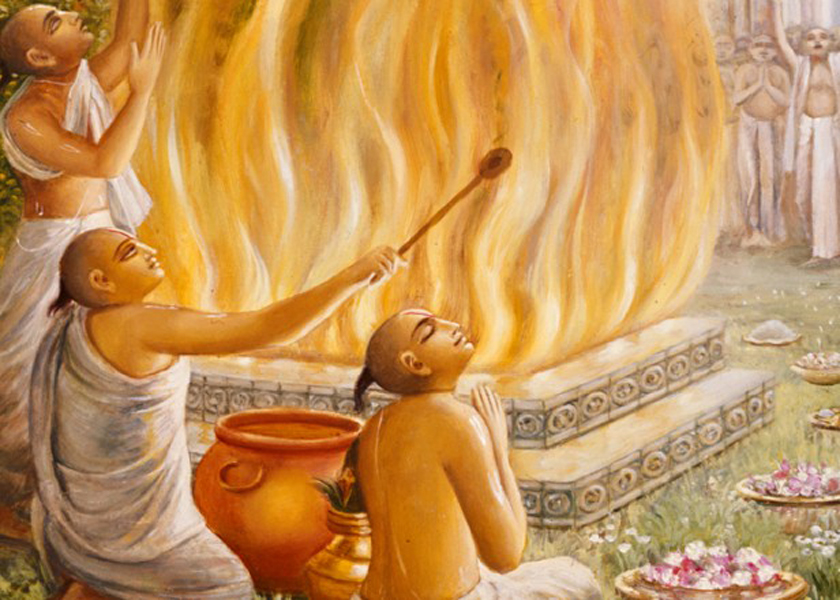Sanatana Dharma, a term deeply embedded in the fabric of Indian culture and religious thought, carries a profound significance that extends beyond its literal meaning of “eternal law” or “eternal religion.” It represents a complex and multifaceted concept, evolving over centuries and reflecting the diverse beliefs and practices that have shaped Hinduism.
The Eternal Dharma: A Journey Through Time
The roots of Sanatana Dharma can be traced back to the Vedic period, a time marked by a profound reverence for the natural world and a search for cosmic order. The concept of dharma, encompassing both moral and cosmic order, was central to this worldview. While the term “Sanatana Dharma” itself appears later in texts like the Mahabharata and the Bhagavad Gita, the core principles of this eternal law are deeply embedded in the Vedic scriptures.
The Vedas and the Cosmic Order
The Vedas, considered the foundational texts of Hinduism, lay the groundwork for understanding the concept of Sanatana Dharma. They emphasize the importance of living in harmony with the natural world, upholding truth and righteousness, and seeking liberation from the cycle of birth and death. The Vedas also introduce the concept of Brahman, the ultimate reality, and the interconnectedness of all beings.
The Mahabharata and the Moral Order
The Mahabharata, one of the greatest epic poems in world literature, delves into the ethical and moral dimensions of Sanatana Dharma. The epic narrates the conflict between the righteous Pandavas and the wicked Kauravas, highlighting the importance of justice, duty, and compassion. The Bhagavad Gita, a part of the Mahabharata, further explores the complexities of dharma, emphasizing the importance of selfless action, devotion, and the pursuit of knowledge.
The Upanishads and the Path to Liberation
The Upanishads, a collection of philosophical texts, delve into the spiritual dimension of Sanatana Dharma. They explore the nature of the soul, the relationship between the individual and the divine, and the path to liberation (moksha). The Upanishads emphasize the importance of self-realization, understanding the true nature of reality, and transcending the limitations of the physical world.

The Rise of Sanatana Dharma as a Defining Term
The term “Sanatana Dharma” gained prominence in the 19th century, a period marked by colonialism and social reform movements in India. It was used to articulate a unified and monolithic Hinduism, distinct from other religions, and to counter the influence of Western religious ideologies.
Colonial Influence and the Search for a Unified Hinduism
The British colonial administration, in its efforts to understand and govern India, sought to categorize its diverse religious and cultural practices. This led to the emergence of a discourse around a unified “Hinduism,” with Sanatana Dharma serving as a unifying principle.
Reform Movements and the Reinterpretation of Tradition
Social reformers like Raja Ram Mohan Roy and Dayanand Saraswati, while advocating for social change, also sought to reinterpret and revitalize traditional Hindu beliefs. They emphasized the importance of the Vedas and the Upanishads, while rejecting practices they considered to be inconsistent with the core tenets of Sanatana Dharma.
The Essence of Sanatana Dharma: A Multifaceted Concept
Sanatana Dharma encompasses a wide range of beliefs and practices, reflecting the diverse traditions and interpretations that have emerged over centuries. While some see it as a monolithic religion, others view it as a tapestry of diverse strands, each contributing to the rich fabric of Hindu thought.
Core Principles:
- Dharma as Cosmic Order: Sanatana Dharma emphasizes the importance of upholding the cosmic order, living in harmony with nature, and acting in accordance with the laws of the universe.
- Moral and Ethical Principles: It emphasizes the importance of truth, righteousness, compassion, and non-violence.
- Self-Realization and Liberation: The pursuit of knowledge, self-realization, and liberation from the cycle of birth and death are central to Sanatana Dharma.
- The Divine and the Nature of Reality: Sanatana Dharma recognizes the existence of a divine reality, often referred to as Brahman, and explores the relationship between the individual soul and the divine.
Diverse Interpretations:
- Vedic Tradition: The Vedic tradition, with its emphasis on rituals, sacrifices, and the importance of the natural world, forms a significant part of Sanatana Dharma.
- Upanishadic Tradition: The Upanishadic tradition, with its focus on philosophical inquiry, spiritual contemplation, and the pursuit of liberation, offers another important perspective.
- Bhakti Tradition: The bhakti tradition, emphasizing devotion to a personal deity, has played a significant role in shaping Sanatana Dharma.
- Yoga and Meditation: Yoga and meditation, practices aimed at achieving physical, mental, and spiritual well-being, are deeply rooted in Sanatana Dharma.
Sanatana Dharma in the Modern World
In the modern world, Sanatana Dharma continues to be a source of inspiration and guidance for millions of people. However, it also faces challenges in navigating the complexities of a rapidly changing world.
Contemporary Interpretations:
- Modern Hinduism: The term “Sanatana Dharma” has been embraced by various Hindu groups and organizations, seeking to promote a unified and inclusive vision of Hinduism.
- Social and Political Context: Sanatana Dharma is increasingly being invoked in the context of social and political discourse, raising questions about its role in shaping contemporary identity and values.
Challenges and Debates:
- Caste System: The caste system, a hierarchical social structure deeply ingrained in Indian society, has been a source of debate and controversy. While some argue that it is an integral part of Sanatana Dharma, others see it as a social injustice that needs to be eradicated.
- Religious Pluralism: The increasing diversity of religious beliefs and practices in India has led to discussions about the relationship between Sanatana Dharma and other religions. Some advocate for a harmonious coexistence, while others argue for the supremacy of Sanatana Dharma.
Conclusion
Sanatana Dharma, with its rich history and diverse interpretations, continues to be a living tradition, shaping the spiritual and cultural landscape of India. While it faces challenges in navigating the complexities of the modern world, its core principles of truth, righteousness, and the pursuit of liberation offer a timeless message that resonates with people across cultures and generations. As we move forward, it is essential to engage in dialogue and critical reflection to ensure that Sanatana Dharma remains a source of inspiration and guidance for a more just and compassionate world.

